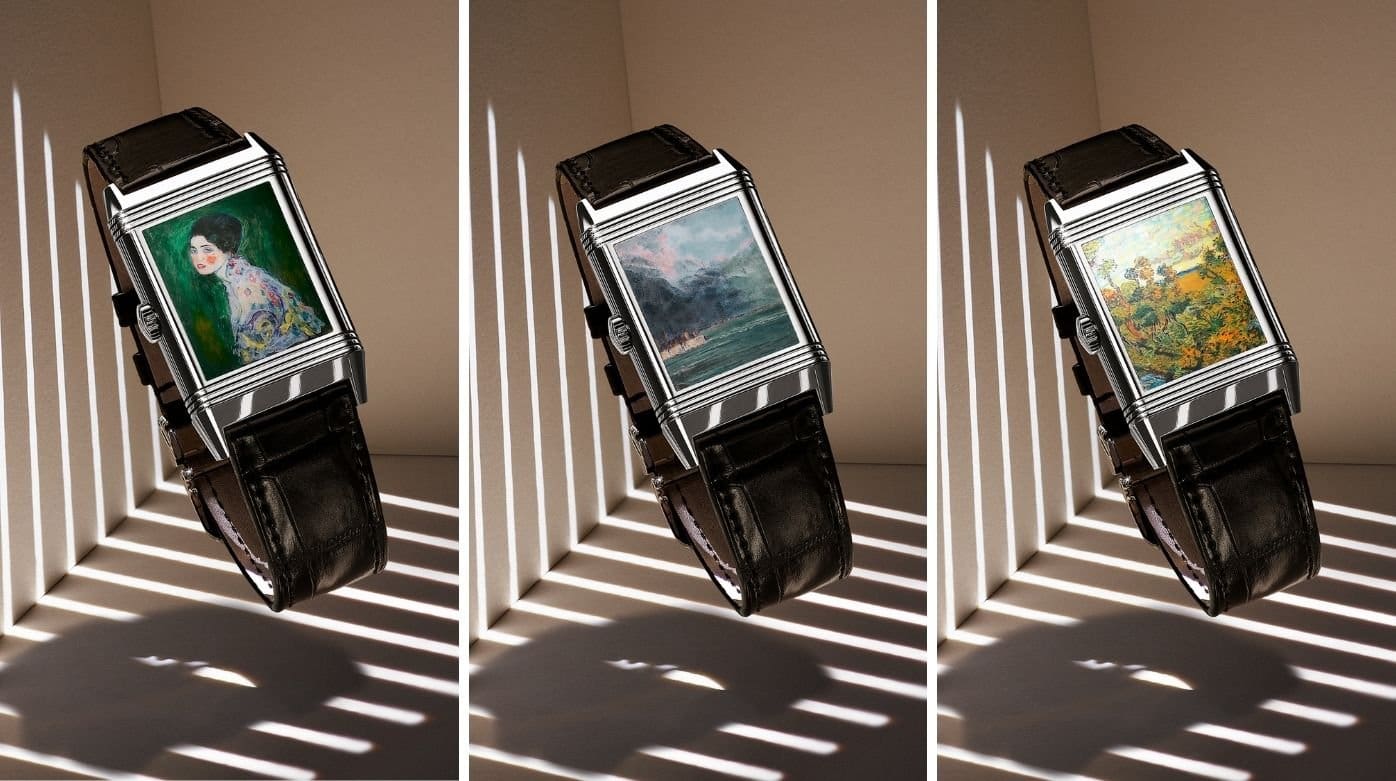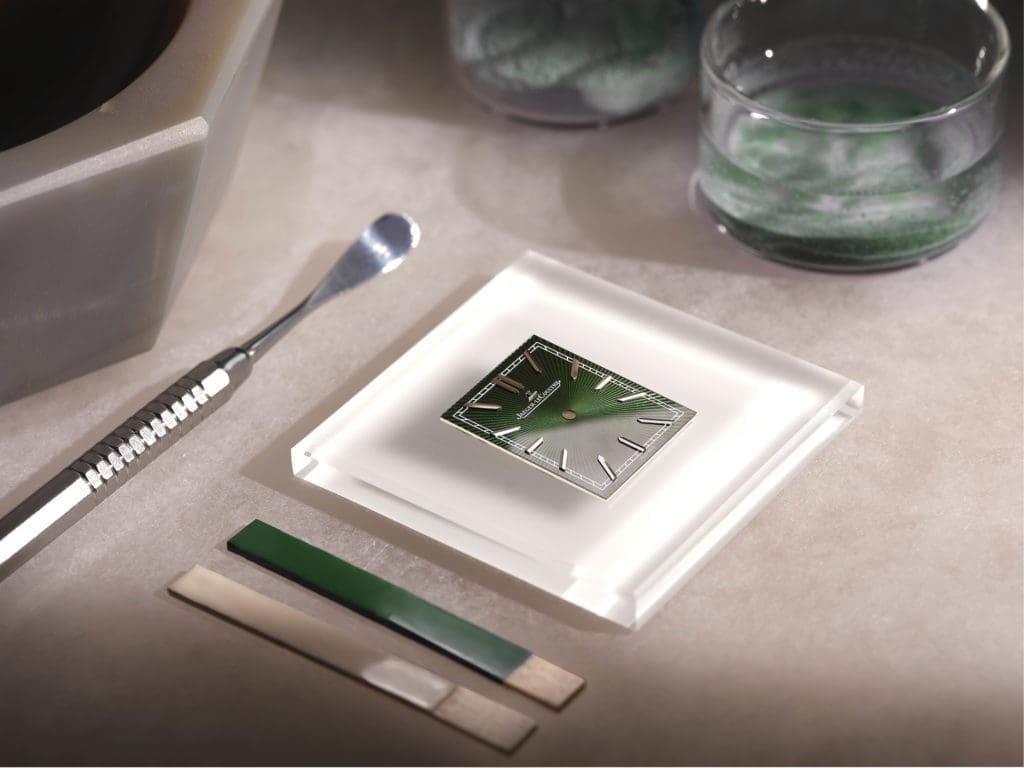Doomed affairs & dumb tycoons – the stories behind the Jaeger-LeCoultre Reverso Tribute Enamel Hidden Treasures
Luke BenedictusPart of me ever so slightly pities whoever is at the helm of Jaeger-LeCoultre in 10 years time. This year, after all, was merely the 90th birthday of the brand’s iconic Reverso, but the celebratory output was wildly impressive. Which begs the question: what the hell are they going to do to top all that when the Reverso’s centenary rolls around in just 10 years time?
You’d imagine that detailed plans are already in motion given the diversity of the Reverso pieces that JLC released this year. These included the Reverso Tribute to Small Seconds, a charming piece that was released in navy, green and burgundy, each coming with a matching calfskin strap made by Argentinian bespoke polo bootmaker Casa Fagliano in a nod to the Reverso’s origin story. Then there was theJaeger-LeCoultre Reverso Hybris Mechanica Calibre 185 Quadriptyque, a preposterously complicated watch with four(!) functional dials that required 12 new patents to create. But another intriguing collection – both in terms of the craftsmanship and extraordinary back stories is the Reverso Tribute Enamel Hidden Treasures
This is a trio of watches released to showcase JLC’s artisanal skills with enamel and miniature painting. “The specific patent of the swivelling case was registered on March 4th, 1931, a little over 90 years ago,” Catherine Renier, the Jaeger-LeCoultre CEO explains. “Right away the Reverso became a symbol of fashion and style and inspired men and women around the world with its very unique feature. But, in fact, the swivelling case became a lot more than the protection as it was thought of first of all. It became a canvas for inspiration for personalization, decoration.”
The background
In 1936, the Maharaja of Tripura commissioned the manufacturer to reproduce a miniature Indian painting on the back of his trusty Reverso (pictured above). His subject was believed to be his second wife, although the true subject has never been identified beyond doubt. The Maharaja’s commission inspired JLC to begin a tradition of miniature enamel painting that is continued to this very day.
Suffice to say, miniature enamel painting is an extremely rare form of craftsmanship that requires a balance of artistic ability and scientific understanding. The first challenge, of course, is the tiny size of the canvas. “You need binoculars to do miniature enamelling – it requires patience and precision,” admits Matthieu Sauret, JLC’s product and heritage director. In addition, the materials are also wildly temperamental. Unlike paint, enamel needs to be fixed by firing and, unhelpfully, different colours fire at different temperatures. A complex piece can therefore need to be fired dozens of times, with each entry to the kiln, potentially destroying all the hours of painstaking labour that have gone into it.
“Experts don’t just come out of school with a diploma to be an enameller,” explains Matthieu. “They can only really learn how to do it after spending years and years of experience to master this technique.”
What’s particularly special about JLC’s Hidden Treasures collection is the guillochéd dials of these Reversos are specially executed to complement the enamel paintings. “We have tried to match the guillochage and the colour of the enamel of each dial and the spirit of the painting at back,” Matthieu says.
Reverso Tribute Enamel Hidden Treasures
The three paintings reproduced in this collection have been picked to honour the Reverso’s unique ability to hide or reveal the artwork created on its reverse side. Each of the chosen paintings had been hidden from the world for many decades and assumed to have been lost forever until rediscovered and authenticated in recent years. Consequently, each of them has a fascinating back story.
Vincent Van Gogh – Sunset at Montmajour (1888)
In 1908, Norwegian factory owner, Christian Mustad, splashed out on this oil painting of a French landscape and displayed it proudly in his home. Unfortunately, one night Mustad was entertaining the French ambassador to Sweden, who insisted to his host that his Van Gogh was actually a fake.
Overcome with embarrassment, Mustad was furious. The painting was immediately removed from the walls of his house and banished to the corner of a dusty attic. There the unloved painting languished for the rest of the Mustad’s life until he died in 1970 and the painting was sold to a collector. At which point, it turned out that the painting had been the real thing all along.
For the Reverso Tribute Enamel Hidden Treasures, Jaeger-LeCoultre’s master enameller manages to evoke the same effect of Van Gogh’s characteristic brush strokes and heavy impasto. The distinctive shade of green enamel chosen for the sunray-guilloché dial provides an effective counterpoint to the rich gold and russet tones of the painting.
Gustav Klimt – Portrait of a Lady (1917)
Perhaps not surprisingly for an artist whose works are often highly erotic, Gustav Klimt had a very energetic love life. While not that much is known about his private life, Klimt was renowned for being a prolific lover, who – despite never marrying – fathered 14 illegitimate children and is rumored to have slept with every woman he painted.
Portrait of a Lady is a lively expressionistic portrayal of a dark-haired woman. But an X-ray of the canvas in 1996 revealed that Klimt had actually painted over another drawing of a woman in a hat and scarf. Historians believe the original piece, Portrait of a Young Woman, was a sketch of a woman the artist was deeply in love with, but who then died, leading Klimt to “bury” her another coat of paint.
The painting was subsequently stolen from the Ricci Oddi Gallery of Modern Art in the Italian city of Piacenza in 1997. Almost 23 years later, it was discovered by a gardener who found the canvas hidden behind a metal panel in an external wall at the same gallery while clearing away ivy. Why the painting, which has an estimated value of at least $66m USD, was left in the wall at the Ricci Oddi Gallery of Modern Art is still a mystery.

Gustave Courbet – View of Lake Léman (1876)
Scandal has never been far from Gustave Courbet’s work – his notorious piece, L’Origine du Monde, famously depicted a close-up of a naked woman’s crotch. But Courbet’s entire life was fairly eventful. When he burst onto the art scene in Paris, he made such an impression that it was written, “It was as if a whirlwind had roared through the gallery rattling the windows and shattering the glass”.
In July 1873, he was forced to flee France for Switzerland for political reasons. Settled on the shores of Lac Léman (Lake Geneva), he painted the lake regularly during his exile. Meanwhile back in France, Courbet’s property was seized, his paintings sold off and his friends and family put under surveillance.
This painting View of Lake Léman was one of the artist’s final works – he died in 1877 at 58 of liver disease due to his alcoholism. It lay unrecognised for almost 70 years after it was moved to a storage locker at the end of the second world war.











